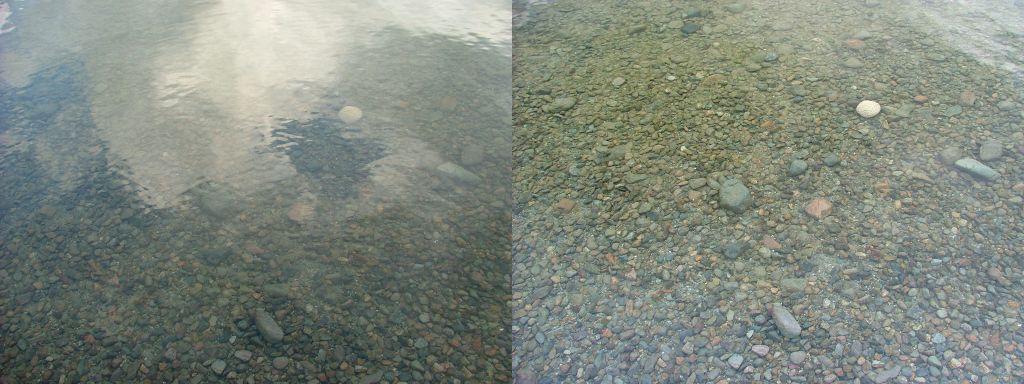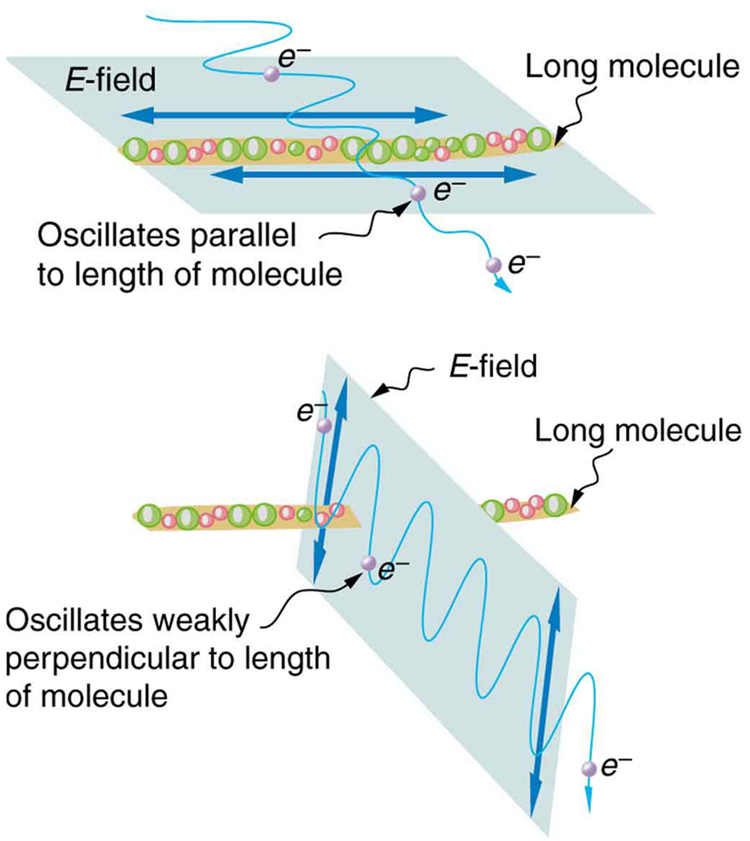Saara Naudts, Peel District School Board
saara.naudts@icloud.com
Inspired by Adam Mills’s recent articles on Shining Light on Grade 10 Optics (see
part 1 and
part 2), I wanted to extend the spotlight to linear polarization in the grade 12 The Wave Nature of Light unit. When teaching how light gets polarized when passing through a filter, we often see a
rope and gate model, where a vertically oriented filter allows vertical vibrations to pass through and a horizontally oriented filter allows horizontal vibrations to pass through. Unfortunately, this model has its shortcomings.
Over a decade ago, OAPT past-president,
Roberta Tevlin introduced me to an activity during which students act out the process of polarization through a polarizing filter the right way. As an advocate for “learning by doing” and as a supporter of John Dewey’s Experiential Learning Theory (Dewey, 1938), I want to share this simple, yet effective dramatization of linear polarization. I hope you will give it a try with your students and find it to be a meaningful and effective teaching strategy.
Background
Most natural light sources emit light in random directions with random orientations and polarization happens after some sort of interaction with matter. For example, when sunlight reflects off a lake, it produces mostly horizontally-polarized light waves. We observe this as a glare. We can wear polarized sunglasses to block the horizontal component of light, and thus reduce the glare (Figure 1).
 Figure 1: A photograph taken with a camera with no filter (left) and with a polarizing filter (right). Notice the polarizer reduces glare off of the water (now you can see the bottom). (Amithshs, 2009)
Figure 1: A photograph taken with a camera with no filter (left) and with a polarizing filter (right). Notice the polarizer reduces glare off of the water (now you can see the bottom). (Amithshs, 2009)
Polarizing filters, like the ones used in sunglasses, contain an array of long molecules. Incoming light has oscillating electric fields and the electrons in the long molecules will respond accordingly. Given that energy cannot be created from nothing, light energy is transferred to the motion of the electrons. In sunglasses, these long molecules are oriented horizontally allowing their electrons to oscillate along this horizontal chain, essentially dissipating horizontally polarized light. Given that these electrons have a hard time oscillating in the vertical direction, little energy from the vertical component of light is dissipated, and thus the vertically oriented light waves travel through the filter (Figure 2).
 Figure 2: Illustration of how electric fields are absorbed when they are parallel to the long molecules in the polarizing filter, and how they can pass through when they are perpendicular to the molecules. (Voer, 2022)
Figure 2: Illustration of how electric fields are absorbed when they are parallel to the long molecules in the polarizing filter, and how they can pass through when they are perpendicular to the molecules. (Voer, 2022)
This brief explanation shows how horizontally aligned molecules block the horizontal component of incoming light and transmit the vertical component of light. This is the opposite of what the gate model depicts. Making students aware of the error in this commonly used model is very important and provides another opportunity to discuss scientific models, what they are, why we have them, where they fall short, and how they continue to evolve as more information becomes available.
Description of Student Activity: Dramatizing a Polarizing Filter
Start by having your students stand up in rows. They represent the long molecules in the polarizing filter. Tell them their arms represent electrons, which are free to move up and down along their bodies, but not side-to-side. You could explicitly tell them this or you could have them lineup shoulder to shoulder such that there is no space for their arms to travel sideways. You stand in front of them with your arms representing the electric field of the incoming light. Start with your arms raised and ask your students to have their electrons respond to the light’s electric field. After a couple of puzzled looks, most students will move their arms up mimicking me. You sigh and shake your head sadly. You remind them that the direction of your arms represents the electric field. If you can give your students a bit of time, a few will start to remember their arms should be oriented downwards, opposite to the teacher’s raised arms, given that the direction of an electric field is based on how a positive charge is forced to move within the field. Now is a good time to play “
Simon Says” and you continue to move your arms down, then up. Eventually all students will respond correctly after their peers remind them of the electric field theory.
Once students get the hang of it, remind students that light is made of an electric field that moves up and down at a regular frequency. Point out that before the light (i.e., you) came near the filter (i.e., your students), the electrons (i.e., their arms) were not moving, and now they are… Ask your students where the electrons got their kinetic energy from. They will very likely respond that it came from the light, and therefore, the light’s energy must diminish. Upon this answer, you make the up-and-down oscillations smaller and smaller indicating that the vertical component is absorbed.
To wrap up the activity, ask your students what will happen if the light’s electric field is horizontal. To test their hypothesis, start moving your hands side-to-side and see how the students’ arms react. Students will demonstrate their understanding by not moving their arms and conclude that horizontal light will pass through the vertically oriented filter.
As a result of this dramatization, students are now able to conclude that when molecules in a filter are vertically aligned, the polarization axis is horizontal, and when molecules in a filter are horizontally aligned, the polarization axis is vertical.
With this deeper understanding of the relationship between the orientation of the long-chain molecules and the orientation of the polarizing axis, you can compare this model with the easier, but incorrect, rope and fence model. There is no doubt that the real explanation of how a polarizing filter works would make the analysis of the filters more confusing. Therefore, I still use the mechanical, picket fence model to analyze light passing through linear polarizing filters. Although the dramatization model is an improved representation of how light is made of transverse waves, it still has its own shortcomings. For example, it would not be possible to demonstrate how light can pass through 2 or more filters at angles other than 0° and/or 90° (see extension for the photon model of light).
To give you a better idea of how this activity works, I asked my students to re-enact the activity for the purpose of this article. A video of how it could play out can be found
here (note that this activity can be done with small or large groups, preferably in person, although it is possible to complete it in an online or hybrid learning environment, which was the case in the video).
Experiential Learning Theoretical Framework: Why Dramatization Works
Students learn by doing. They do not learn from experience, instead they learn from reflecting on experience. In 1938, John Dewey published these ideas and his learning theory in the book Experience and Education (Dewey, 1938). He emphasizes that the role of the teacher is to provide opportunities for learners to work towards goals that are relevant and meaningful to them, rather than imposed from above. His ideas may have been around for a century, but they are as applicable today as ever. Many of the activities presented by OAPT members engage students and get them actively involved in the learning process, and are (aware to the teacher or not) rooted in Dewey’s Experiential Learning Theory.
When following up with students after a few weeks, months, or years, you may be surprised to hear they will still remember this type of learning and possibly be able to explain how linear polarizing filters work. It helps that the concept is directly applicable to their lives, as many students have polarized sunglasses, watch LCD screens, or use polarizing filters in their photography projects (I work at an art school…). They may find that since most television screens are polarized vertically, if they watch TV wearing polarized sunglasses, they cannot lie down sideways on their couch (or have their computer monitor mounted vertically), or they will see a dark screen.
Extension
Polarization is a great concept to reinforce or extend key concepts of quantum mechanics as it applies the ideas of wave-particle duality, measurement disturbance, and intrinsic randomness. I compiled peer review questions that demonstrate these concepts from Roberta’s and the OAPT’s websites (
Polarization Document). OAPT has many more concept peer review questions on light and other topics posted on their website (click
here).
Conclusion
Newton once said “If I have seen further, it is by standing on the shoulders of giants” (Levy, 2010)*. As stated in the introduction, this activity was introduced to me by a giant, Roberta Tevlin. Perhaps you can take a moment to write an article and share one of your successful activities, which will help build
collective efficacy and benefit all of our students. If you are trying this activity with your students, please share your experiences! There will be a follow-up article on how to dramatize the concepts of diffraction and refraction. Thank you and stay tuned.
References
Amithshs (2009). Public Domain image by Amithshs. Retrieved February 28, 2022, from
https://en.wikipedia.org/wiki/Polarizing_filter_(photography)#/media/File:Reflection_Polarizer2.jpg Dewey, J. (1938). Experience and education. New York: Macmillan.
Levy, J. (2010). Newton's Notebook: The life, times and discoveries of sir Isaac Newton. Running Press.
Voer. (2022). College physics. VOER. Retrieved January 24, 2022, from
https://voer.edu.vn/c/polarization/0e60bfc6/1b27362f#import-auto-id1169736723189 * This quote came from a letter from Newton to Hooke in 1676, but may not have had the same meaning as how most of us interpret it… Robert Hooke was not a tall man and since he and Newton “did not get along”, Newton may have used this expression to take a jab at Hooke. If that was the case, the use of the quote in the context of the article was intended in all positive possible ways :)
Tags: Light, Pedagogy



